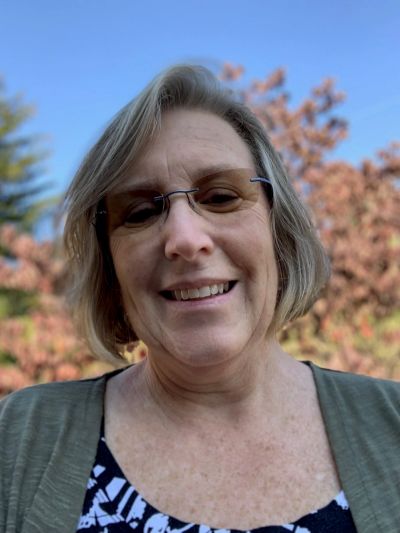SPRINT® PNS; Low Back Pain/Arthritis
Roberta grew up in a small town in Lancaster County, Penn. As the youngest of six, she worked hard to keep up with her four older brothers. “I did everything the boys did,” recalls Roberta. “I liked to stay active and run around and try things.” That’s why it was so difficult for her when, as an adult, pain began keeping her from doing the things she loved.
“I always did sports. In fact, I played field hockey until I was 32,” says Roberta, an audit coordinator for a local health system. “But I have a lot of arthritis in my entire body, so I had to stop doing that, because I had too many aches and pains. It’s hereditary; I get it from my mom's side.”
Despite the pain, she stayed active other ways. “I can never sit still,” explains Roberta. “It drives me crazy. If something needs doing, I’ll do it. Climb ladders, put up gutters. I’m up and down constantly, despite the pain.”
Shooting pains in her leg
A few years ago, the arthritis was getting so bad in Roberta’s knee that she was scheduled for replacement surgery. However, prior to surgery, an intense type of pain, called sciatica, was radiating along her sciatic nerve in her right leg. “I could barely walk, sit, or drive, but I had to drive 30 minutes to get to work. So, it was very hard. Just painful.”
She discussed her sciatica with the orthopedist who was going to perform her knee surgery. He gave her an injection in her buttock, which, according to Roberta, took care of the pain and provided relief for several months. “I was so happy with it (the shot), and then I got my knee done and I was ecstatic, but then the sciatica started coming back. I now had sciatica on both sides and my lower back was hurting.”
Roberta began looking for other ways to relieve her pain. “I don’t like taking medication. The hardest thing I took is a Tramadol, but only once in a while and only at night,” explains Roberta. “I’m just very cautious. There’s too much opioid abuse and I don’t want to be part of it.”
Enough is enough
When she started dragging her leg after a long day of laying down mulch outside her home, she decided enough was enough. “I thought, ‘this is just not right,’” recounts Roberta. She went to her doctor, and they tried more steroid injections and tried ablation on her right side, which worked for a while, but the pain kept coming back. “It stopped me from doing what I like doing … walking, staying active, gardening, and canning (vegetables).”
Finally, her physician advised her to see a pain management specialist, which led her to Dr. Rajat Mathur at WellSpan Interventional Pain Specialists. Roberta says she liked Dr. Mathur right away. “He was very good, very upfront. I like that he’s well-educated and wants to try new things.” That’s why she trusted him when he mentioned the SPRINT® PNS system. “It was a brand-new system for him, and he told me he’d like to use it on my right side first, so I said, ‘fine, let’s do it.’ I think I was one of his first patients to use SPRINT,” she recalls.
Dr. Mathur inserted the lead into Roberta’s lower back. At first, she was annoyed that she had to have her husband help her with changing the bandages. “I don’t like relying on other people, but my husband did an excellent job,” says Roberta.
Pain relief begins
When the unit was on, Roberta liked the feeling. “I loved it. When it stopped, I missed it.” She says it took about three weeks to feel relief on the right side. The same went for her left side, which was treated with SPRINT a couple months later.
Today, she reports that she’s experiencing much less pain. “On the right side, I feel great, 100% relief, and that’s the side my leg dragged on, so I’m elated about that. The left side was more difficult to treat because Dr. Mathur says I still have iliac crest (pelvis bone) issues, but I’m thrilled because I am at about 80% pain relief on that side,” says Roberta.
“Now that I’ve had SPRINT on both sides, I just do stuff and don’t worry about it,” she says. “It’s really lovely.”
